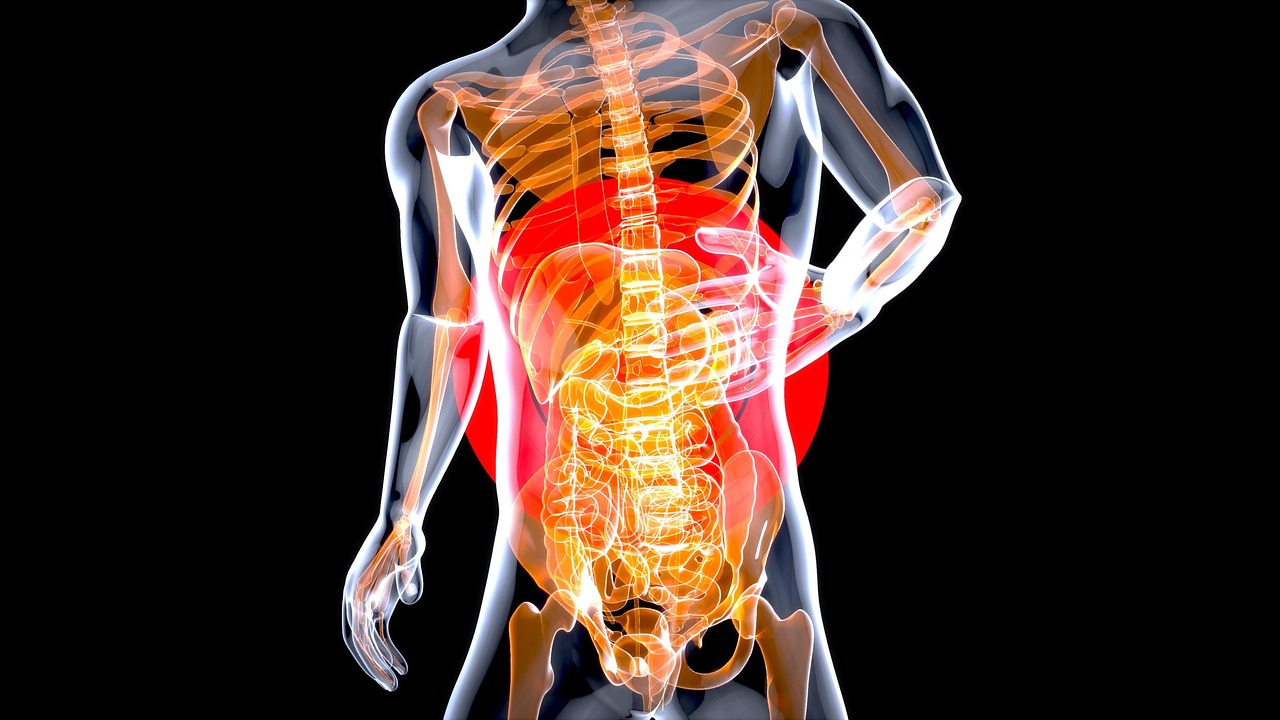Understanding Cholangiocarcinoma and Its Key Characteristics

Cholangiocarcinoma is a rare and aggressive cancer that develops in the bile ducts, which are essential for transporting bile from the liver to the digestive system. This disease has become one of the most common malignant liver tumors worldwide, with its incidence steadily increasing. Researchers attribute this rise to a mix of environmental factors and complex biological processes that vary by region.
Diagnosing cholangiocarcinoma presents significant challenges, often delaying treatment. On average, patients wait 22 months from the onset of symptoms to receive a diagnosis. Many are initially misdiagnosed with other cancers, such as gallbladder or pancreatic cancer, leading to further delays. These obstacles highlight the importance of early detection and accurate diagnosis to improve outcomes.
Key Takeaways
Cholangiocarcinoma is a rare cancer that grows in bile ducts. Finding it early helps improve treatment success.
There are two main types: intrahepatic and extrahepatic. Each type is different and affects how doctors treat it.
Genetic changes, like FGFR2 fusions, are important in this cancer. Learning about these changes helps create better treatments.
Tests like MRI and CT scans are used to find this cancer. These tests show the tumor and help plan treatment steps.
Taking care of symptoms is very important during treatment. Small lifestyle changes can make patients feel better.
Types of Cholangiocarcinoma

Cholangiocarcinoma can be classified into two main types based on its location: intrahepatic and extrahepatic. Each type has unique characteristics that influence diagnosis and treatment.
Intrahepatic Cholangiocarcinoma
Intrahepatic cholangiocarcinoma (ICCA) develops within the liver, specifically in the bile ducts located beyond the root of the secondary bile duct. This type accounts for about 20% of all cholangiocarcinomas and is the second most common primary liver cancer after hepatocellular carcinoma. ICCA is rare, representing only 3% of gastrointestinal tumors. However, its incidence has been increasing in Western countries. You may notice that ICCA has distinct molecular and genomic features compared to other biliary tract cancers. These differences often affect its clinical presentation and prognosis, making early detection crucial.
Extrahepatic Cholangiocarcinoma
Extrahepatic cholangiocarcinoma occurs outside the liver and is further divided into two subtypes: perihilar and distal cholangiocarcinoma. These subtypes differ in their location and clinical behavior.
Perihilar Cholangiocarcinoma
Perihilar cholangiocarcinoma, also known as Klatskin tumor, arises at the junction where the left and right bile ducts meet. This is the most common type of cholangiocarcinoma. It often causes bile duct obstruction, leading to symptoms such as jaundice. If you experience these symptoms, it is essential to seek medical attention promptly.
Distal Cholangiocarcinoma
Distal cholangiocarcinoma forms in the bile ducts closer to the small intestine. This subtype often mimics other gastrointestinal conditions, which can delay diagnosis. You might find that its symptoms include abdominal pain, weight loss, and changes in stool color. These signs highlight the importance of thorough diagnostic evaluations.
Understanding the types of cholangiocarcinoma helps you recognize its complexity and the need for tailored treatment approaches. Each type presents unique challenges, but advancements in research continue to improve outcomes for patients.
Causes and Risk Factors
Genetic and Molecular Changes
Cholangiocarcinoma often arises from genetic alterations that disrupt normal cell growth. These changes can include mutations, amplifications, and gene fusions. One of the most notable genetic abnormalities is the FGFR2 fusion.
FGFR2 fusions result in the production of an overactive FGFR2 protein.
This abnormal protein drives uncontrolled cell division and growth.
The proliferation of bile duct cells caused by FGFR2 fusions contributes to tumor formation.
Understanding these molecular changes can help you appreciate why targeted therapies are being developed to address specific genetic drivers of cholangiocarcinoma.
Common Risk Factors
Chronic Liver Disease
Chronic liver disease significantly increases your risk of developing cholangiocarcinoma. Conditions like cirrhosis and primary sclerosing cholangitis promote chronic inflammation and cholestasis. These processes stimulate the growth of biliary epithelial cells, which can lead to cancer. If you have a history of liver disease, regular monitoring is essential to detect potential complications early.
Parasitic Infections
In certain regions, parasitic infections play a major role in cholangiocarcinoma development. For example, liver flukes, common in East Asia, can cause chronic inflammation in the bile ducts. This inflammation creates an environment conducive to cancer formation. If you live in or travel to areas where liver flukes are prevalent, taking preventive measures can reduce your risk.
Environmental and Lifestyle Factors
Environmental and lifestyle factors also contribute to cholangiocarcinoma risk.
Exposure to chemical compounds like naphthenic acids has been linked to higher rates of this cancer in Western countries.
Chronic inflammation and cholestasis, often exacerbated by environmental toxins, further increase the risk.
Geographic differences in risk factors highlight the role of environmental influences in cholangiocarcinoma development.
By understanding these risk factors, you can take proactive steps to minimize your exposure and maintain liver health.
Diagnosing Cholangiocarcinoma
Imaging Techniques
MRI and CT Scans
Imaging techniques play a vital role in diagnosing cholangiocarcinoma. Magnetic resonance imaging (MRI) and computed tomography (CT) scans are among the most commonly used methods. These tools help you visualize the bile ducts and surrounding tissues in great detail. MRI provides high-resolution images that can detect abnormalities in soft tissues, while CT scans offer a comprehensive view of the liver and bile ducts. Both techniques assist in identifying the location and extent of the tumor, which is crucial for planning treatment. If you undergo these scans, your doctor can better understand the stage of the disease and recommend the next steps.
Molecular Profiling
Genetic vs. Genomic Testing
Molecular profiling has transformed how cholangiocarcinoma is diagnosed and treated. It involves analyzing the genetic makeup of the tumor to identify specific alterations. Genetic testing focuses on individual genes and their inherited traits. In contrast, genomic testing examines all genes and their interactions with the environment. For example, an FGFR2 fusion is a genomic alteration often linked to cholangiocarcinoma. By understanding these differences, you can appreciate how molecular profiling helps tailor treatments to target specific genetic drivers of the disease.
Molecular profiling through next-generation sequencing (NGS) is particularly valuable. It identifies gene alterations like FGFR2 fusions, which are critical for tumor growth. This information guides treatment decisions, including the use of targeted therapies such as PEMAZYRE. If your tumor has specific genetic changes, these therapies can improve outcomes by addressing the root cause of the cancer.
Biopsy and Pathology
Biopsy remains the gold standard for diagnosing cholangiocarcinoma. It involves collecting tissue samples to confirm the presence of cancer cells. Several techniques are available, each with unique advantages:
Description | |
|---|---|
Laparoscopy | A surgical procedure to examine the abdomen and take tissue samples. |
Percutaneous transhepatic cholangiography (PTC) | An x-ray procedure to visualize the liver and bile ducts, allowing for tissue sampling. |
Endoscopic retrograde cholangiopancreatography (ERCP) | An endoscopic procedure to examine bile ducts and obtain tissue samples. |
Endoscopic ultrasound (EUS) | An endoscopic procedure using ultrasound to visualize tissues and take samples. |
These techniques provide reliable results, helping your doctor confirm the diagnosis and plan the most effective treatment. If you undergo a biopsy, the results will offer critical insights into the nature of your tumor.
Treatment Options for Cholangiocarcinoma

Surgery
Surgery offers the best chance for curing cholangiocarcinoma when the tumor is localized and resectable. The type of surgery depends on the tumor's location and size. Here are the main surgical options:
Surgical Procedure | Description |
|---|---|
Removal of the bile duct | A procedure to remove part of the bile duct if the tumor is small and localized. |
Partial hepatectomy | Removal of the part of the liver where cancer is found, which may include a wedge, lobe, or larger part. |
Whipple procedure | Removal of the head of the pancreas, gallbladder, part of the stomach, small intestine, and bile duct. |
Your doctor will evaluate factors like tumor size, location, and your overall health to determine the best surgical approach. Surgery can be complex, but it provides the highest chance of long-term survival when successful.
Chemotherapy and Radiation
Chemotherapy and radiation therapy play crucial roles in managing cholangiocarcinoma, especially when surgery is not an option. These treatments aim to control tumor growth, relieve symptoms, and improve quality of life.
Treatment Type | Description |
|---|---|
Chemotherapy | Uses drugs to stop the growth of cancer cells, effective for unresectable, metastatic, or recurrent bile duct cancer. |
External-beam radiation therapy | Used as adjuvant therapy for resectable bile duct cancer, helps in managing symptoms and improving quality of life. |
Combination chemotherapy | Involves using multiple chemotherapy agents, studied for effectiveness in various scenarios. |
Intra-arterial embolization | A procedure being studied to block blood supply to tumors, allowing higher drug concentration. |
Palliative radiation therapy | Aims to relieve symptoms and improve quality of life in advanced stages of the disease. |
If you undergo chemotherapy or radiation, your care team will monitor your response closely to adjust the treatment plan as needed.
Targeted Therapies
Targeted therapies have revolutionized the treatment of cholangiocarcinoma by focusing on specific genetic mutations that drive tumor growth. These therapies are particularly effective for patients with advanced or metastatic disease.
PEMAZYRE and FGFR2 Alterations
Pemigatinib (PEMAZYRE) is a targeted therapy approved for cholangiocarcinoma patients with FGFR2 mutations. This drug works by inhibiting the FGFR2 protein, which plays a key role in tumor cell proliferation. If your tumor has an FGFR2 alteration, PEMAZYRE can help slow disease progression and improve outcomes.
Other targeted therapies address different genetic mutations:
Targeted Therapy | Genetic Alteration Addressed |
|---|---|
Pemigatinib (Pemazyre) | FGFR2 mutation |
Ivosidenib (Tibsovo) | IDH1 mutation |
Dabrafenib (Tafinlar) + Trametinib (Mekinist) | BRAF V600E mutation |
Your doctor may recommend genetic testing to identify mutations in your tumor. This information helps determine whether targeted therapy is a suitable option for you.
Clinical Trials and Emerging Therapies
Clinical trials offer hope for advancing cholangiocarcinoma treatment by testing innovative therapies. These trials focus on targeted therapies and next-generation sequencing to improve outcomes for patients with specific genetic mutations.
Advancement | Description |
|---|---|
FGFR Inhibitors | Pemigatinib showed a 36% response rate and a 21-month median overall survival in patients with FGFR2 mutation. |
IDH1 Inhibitors | Ivosidenib demonstrated a 63% reduction in disease progression risk compared to placebo in patients with IDH1 mutation. |
Next-Generation Sequencing | Essential for identifying candidates for targeted therapies, increasing the chance of effective treatment by at least 25%. |
Emerging therapies under investigation include promising drugs like Infigratinib, which outperformed standard chemotherapy in trials, and Futibatinib, an FGFR1-4 inhibitor with a median progression-free survival of 7.2 months. These therapies target specific genetic mutations, offering personalized treatment options. For example, Dabrafenib and Trametinib have shown remarkable responses in patients with BRAF V600E mutations. Participating in clinical trials gives you access to cutting-edge treatments and contributes to advancing medical research.
Tip: Ask your doctor about clinical trials that match your genetic profile. This step could open doors to therapies tailored to your condition.
Supportive Care and Symptom Management
Supportive care plays a vital role in managing symptoms and improving your quality of life during cholangiocarcinoma treatment. Simple lifestyle adjustments and medical interventions can make a significant difference.
A special diet may help assess your digestive tolerance.
Medications can alleviate nausea, a common side effect of chemotherapy.
Frequent small meals help manage nausea and maintain nutrition.
Baking soda and salt rinses can soothe mouth sores.
To manage diarrhea or constipation, dietary changes and medications are often recommended. Avoiding fatty foods and focusing on a nutritious diet can also reduce side effects.
Increased involvement in decision-making.
Decreased anxiety and depression.
Enhanced ability to cope with the diagnosis and treatment.
Improved communication with family members.
Higher compliance with medical recommendations.
By prioritizing supportive care, you can improve your overall well-being and better manage the challenges of treatment. Patient education also empowers you to recognize symptoms early and participate actively in your care plan.
Safety and Side Effects of Therapies
Common Side Effects of Targeted Therapies
Targeted therapies for cholangiocarcinoma, such as FGFR inhibitors, often cause specific side effects. You may experience gastrointestinal issues like nausea, vomiting, diarrhea, or constipation. A reduced appetite is also common. These treatments can lead to dryness in your mouth and eyes due to their impact on mucous membranes. Hyperphosphatemia, or elevated phosphate levels, is another frequent side effect. Managing this condition often involves using phosphate binders and following a low-phosphorus diet, which can be challenging since phosphorus is present in many healthy foods.
Other side effects include hand-foot syndrome, which causes redness and swelling in your palms and soles, and nail toxicities. Some patients face a risk of retinal detachment, making baseline eye exams and regular monitoring for vision changes essential. Understanding these potential side effects helps you prepare for and manage them effectively during treatment.
Managing Side Effects
Managing side effects requires a proactive approach. For gastrointestinal symptoms, you can try eating smaller, more frequent meals to ease nausea and maintain nutrition. Staying hydrated helps combat dry mouth, while artificial tears can relieve dry eyes. If you develop hyperphosphatemia, your doctor may recommend dietary adjustments and medications to control phosphate levels.
Hand-foot syndrome and nail issues may improve with moisturizing creams and protective measures like wearing soft gloves or avoiding harsh chemicals. Regular communication with your healthcare team ensures that side effects are addressed promptly. By taking these steps, you can improve your comfort and maintain your quality of life during treatment.
Importance of Regular Monitoring
Regular monitoring plays a critical role in managing your treatment journey. It allows your doctor to identify and address symptoms early. Adjustments to your treatment plan can be made based on your specific needs. Monitoring also ensures that supportive care is tailored to manage side effects effectively.
Tip: Keep track of any new symptoms or changes in your condition. Sharing this information with your care team helps them provide the best possible support.
By staying vigilant and attending follow-up appointments, you can improve your outcomes and maintain better control over your health.
Cholangiocarcinoma is a rare but aggressive cancer that demands attention due to its complex nature. Understanding its types, such as intrahepatic and extrahepatic, helps you recognize its diverse presentations. Early diagnosis is critical, as delays often lead to disease progression and limited treatment options. Timely intervention can significantly improve outcomes and quality of life.
Personalized treatment plans, including surgery, chemotherapy, and emerging therapies, offer tailored solutions based on your unique needs. These approaches enhance satisfaction, reduce anxiety, and improve communication with loved ones. Always consult healthcare professionals to explore the best strategies for managing this challenging condition.
FAQ
What are the early symptoms of cholangiocarcinoma?
Early symptoms often include jaundice, abdominal pain, and unexplained weight loss. You might also notice dark urine, pale stools, or itchy skin. These signs can resemble other conditions, so consulting a doctor for proper evaluation is essential.
Can cholangiocarcinoma be prevented?
While you cannot completely prevent it, reducing risk factors helps. Avoid liver fluke infections, limit alcohol consumption, and maintain a healthy weight. Regular check-ups are crucial if you have chronic liver disease or other risk factors.
How is cholangiocarcinoma staged?
Doctors use imaging tests and biopsies to stage the cancer. Staging determines the tumor's size, location, and spread. This information helps guide treatment decisions. The stages range from localized (early) to advanced (metastatic).
Are there alternative treatments for cholangiocarcinoma?
Alternative treatments like acupuncture or herbal remedies may help manage symptoms. However, they do not replace standard medical care. Always discuss these options with your doctor to ensure safety and compatibility with your treatment plan.
How can I support a loved one with cholangiocarcinoma?
Offer emotional support and help with daily tasks. Encourage them to follow their treatment plan and attend appointments. Listening without judgment can make a significant difference. Joining support groups together may also provide comfort and guidance.
Tip: Educate yourself about the disease to better understand their challenges and needs.
---
ℹ️ Explore more: Read our Comprehensive Guide to All Known Cancer Types for symptoms, causes, and treatments.
See Also
Essential Insights About Carcinoid Tumors You Must Understand
Understanding Carcinoid Syndrome: Key Symptoms You Should Recognize
Important Facts Regarding Basaloid Squamous Cell Lung Cancer
